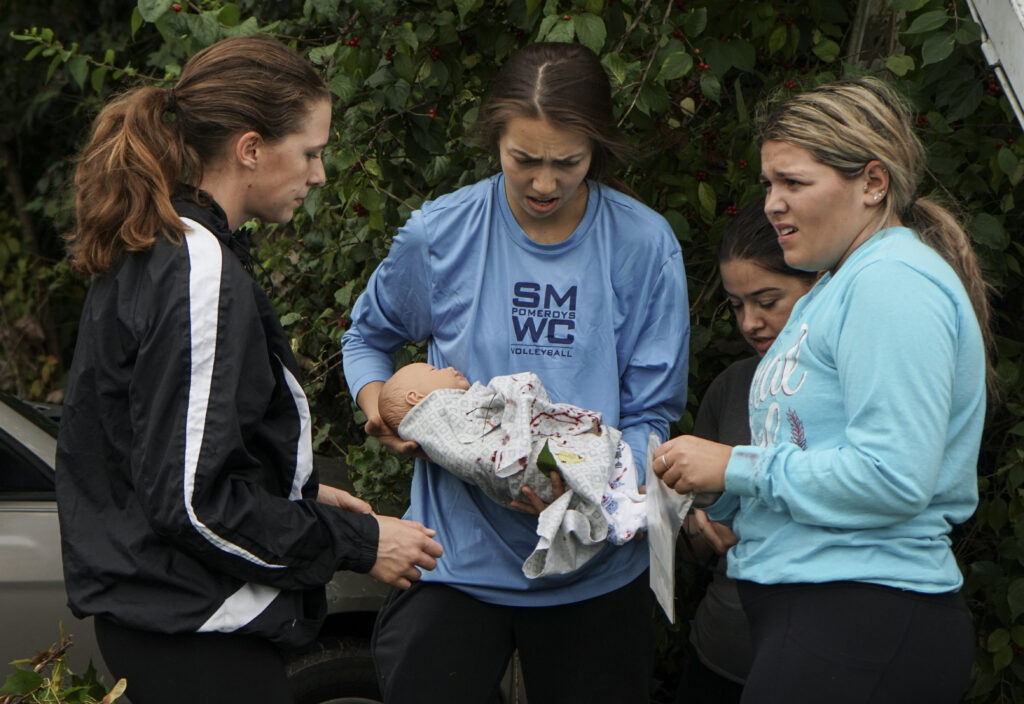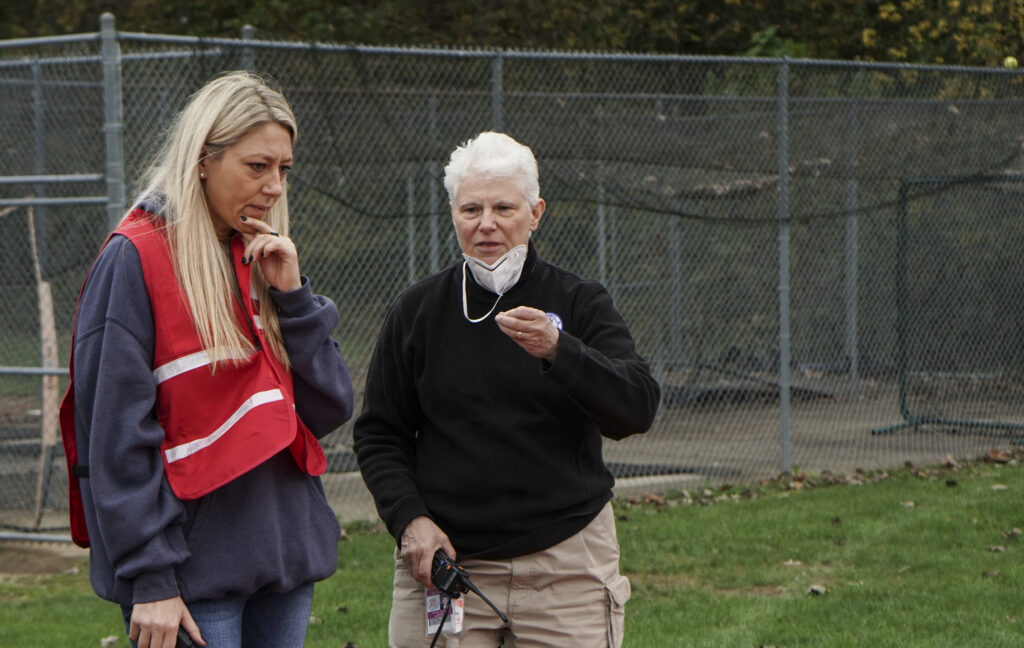As the result of a derecho, or windstorm, individuals were facing some severe injuries on the Saint Mary-of-the-Woods College athletics fields on Friday. Luckily, SMWC nursing students took their in-class experiences to help others.

In coordination with the SMWC social and behavioral sciences department and the Vigo County Emergency Management Agency, the disaster drill helps nursing students put their classroom lessons to the test. Volunteers — many of them criminology or undergraduate nursing students — simulate injuries and are given cards with their medical status. The nursing students can then identify and classify patients as needed.
Separating patients into red, yellow and green categories helps determine who needs help first. Red was for critical injuries, yellow was for non-life-threatening injuries and green meant patients did not require immediate attention.
Chair for the Department of Nursing and professor of nursing, Marcia Miller, Ph.D., RN, said the drill is the perfect time to combine many of the skills they’ve learned.
“What we try to do is prepare people for what they might find in the future,” Miller said. “They learn triage skills, emergency first aid skills, communication skills and how to work together in teams.”
The windstorm was devastating — a car crashed into a tree and ejected an infant; several victims were hit with shrapnel and even a few fatalities occurred.
For Ashley Wells, a senior nursing and psychology major from Brazil, the drill was good practice as she wants to be a trauma nurse.

“It was very nerve-wracking, but I think it went very well as it was our first disaster drill,” Wells said. “The most shocking part was trying to figure out which patients were a top priority because each patient had an issue.” Wells oversaw the red tarp, where critical patients were being delivered for treatment. “I feel like I learned a lot about the nursing side and the roles we would play in a disaster like this.”
Although Wells wants to be a trauma nurse, Miller said the drill is for all types of nurses.
“It helps them no matter what form of healthcare they go into,” Miller said. “It’s anticipated that everybody will go through some kind of disaster in their career.” She said it could be a natural disaster or even something like an airplane crash. Having the practice in a controlled situation can help nurses with the procedures should they have to deal with a real disaster.
The event was created and put on as a service to the nursing department, said Louis Reeves, MS, visiting assistant professor of criminology. He and a group of other faculty and community members get together to plan the disaster. In years past, they have simulated an active shooter and an earthquake. Their goal, he explained, is to make the disaster different each year, so they don’t know what to expect.
The windstorm damage they reproduced went right as planned, he said. “Everything seemed to function like clockwork,” Reeves said. “The nursing students did a fantastic job. They were presented with chaos and confusion, and they were able to put some order to it and work through the situation.”
Wells agrees the event was spot on for her training. “I felt like all the people who were involved in this made it really realistic and helped us learn,” she said. With resources from the Vigo County Emergency Management Agency, students could use actual materials during the exercise. Dorene Hojnicki, DO, director of the Vigo County EMA, provided training a week before the drill. Providence Healthcare also sent a few employees for the exercise.
